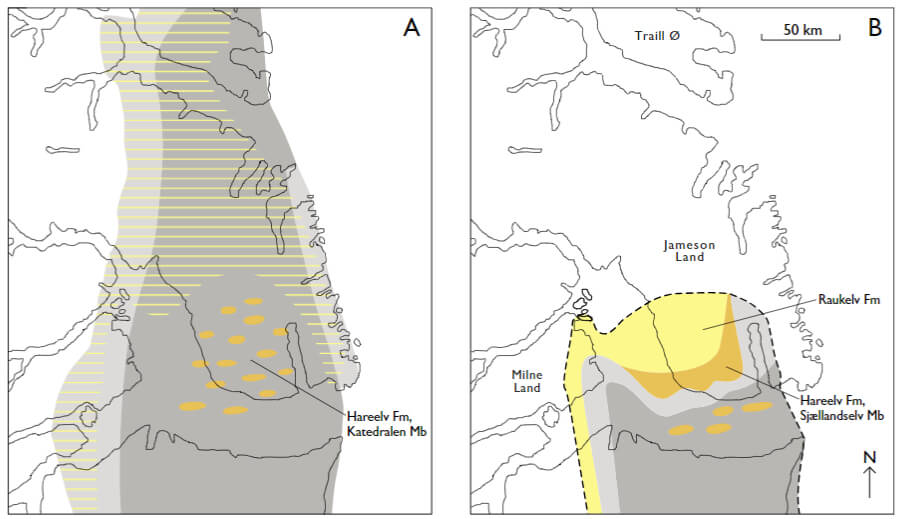
How to Cite
Share
Abstract
Petrographic analysis combined with X-ray diffraction are used to identify the diagenetic changes that have affected the porosity and permeability of gravity-flow sandstones of the Oxfordian–Volgian Hareelv Formation in the cored Blokelv-1 borehole in Jameson Land. Kaolinite replacement of albite grains probably occurred early after deposition and microquartz coatings formed under shallow burial. At deeper burial, illite and quartz formed from kaolinite and K-feldspar. Pervasive ankerite cement formed in the finest grained sandstones and may have formed at the expense of early calcite cement. Quartz overgrowths are volumetrically small, partly due to inhibition by microquartz coatings and partly due to limited residence time during deep burial. The succession reached the maximum burial depth of c. 2.8 km during the late Eocene. Basaltic material was intruded into the sediments during the early Eocene and the enhanced heat flow accelerated diagenesis in the close vicinity of the intrusions, which have thicknesses of up to 2 m. Most of the sandstones have porosities between 14.4 and 25.7% and permeabilities between 0.4 and 411.9 mD; this variation resulted from a combination of microquartz coatings and clay minerals. However, the intrusion-influenced sandstones and the ankerite-cemented sandstones have lower porosity and permeability.
How to Cite
Share
Copyright (c) 2018 Mette Olivarius, Rikke Weibel, Niels H. Schovsbo, Dan Olsen, Claus Kjøller

This work is licensed under a Creative Commons Attribution 4.0 International License.
Downloads
Editors: Jon R. Ineson and Jørgen A. Bojesen-Koefoed
The exposed Jurassic succession in East and North-East Greenland has long been presented as an analogue for equivalent deeply buried strata on the Norwegian conjugate shelf and offshore North-East Greenland. In particular, the Upper Jurassic marine mudstone succession is often ascribed source-rock potential as [...]









